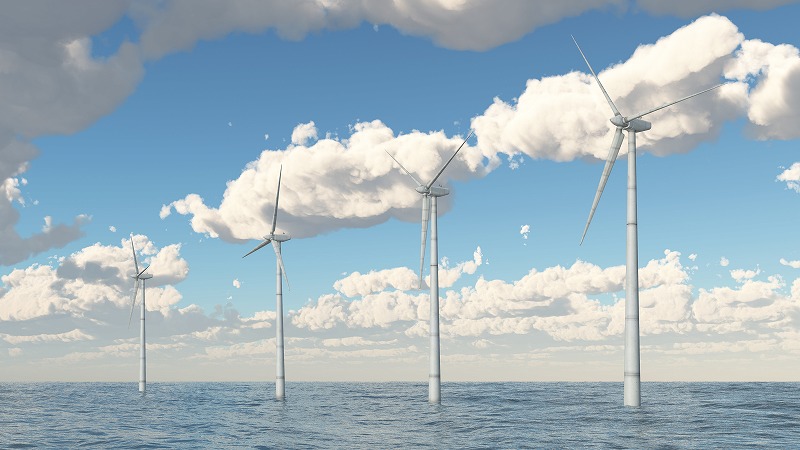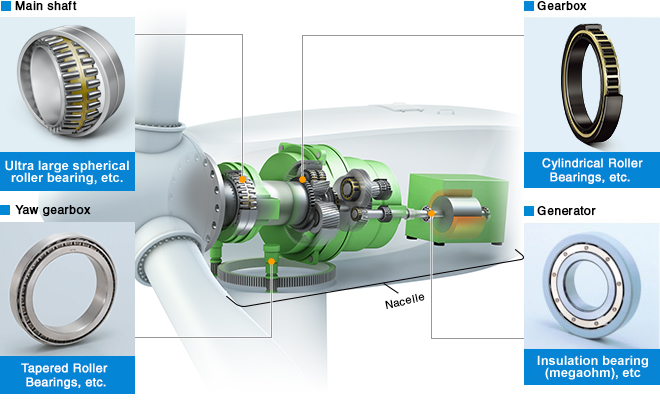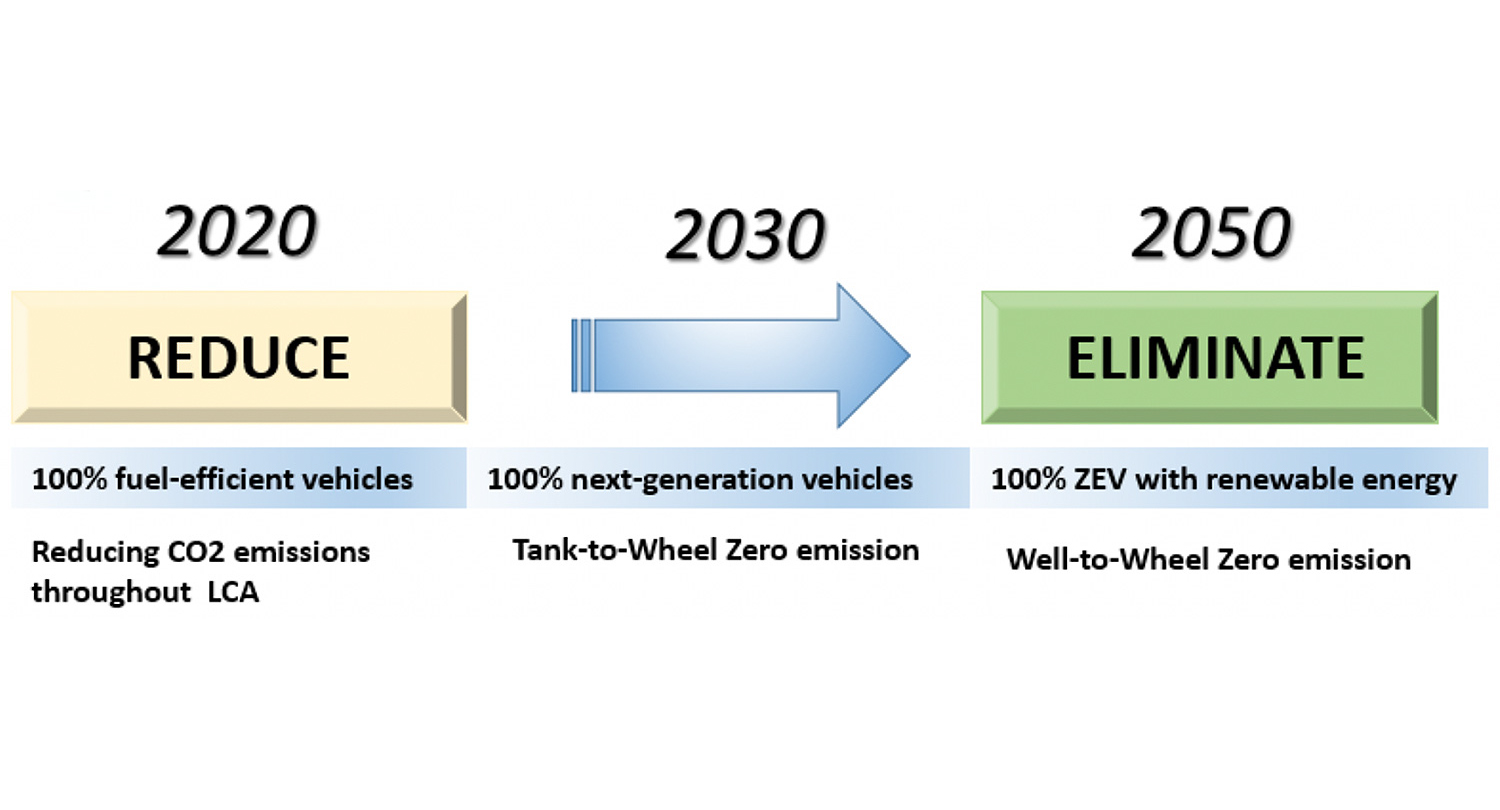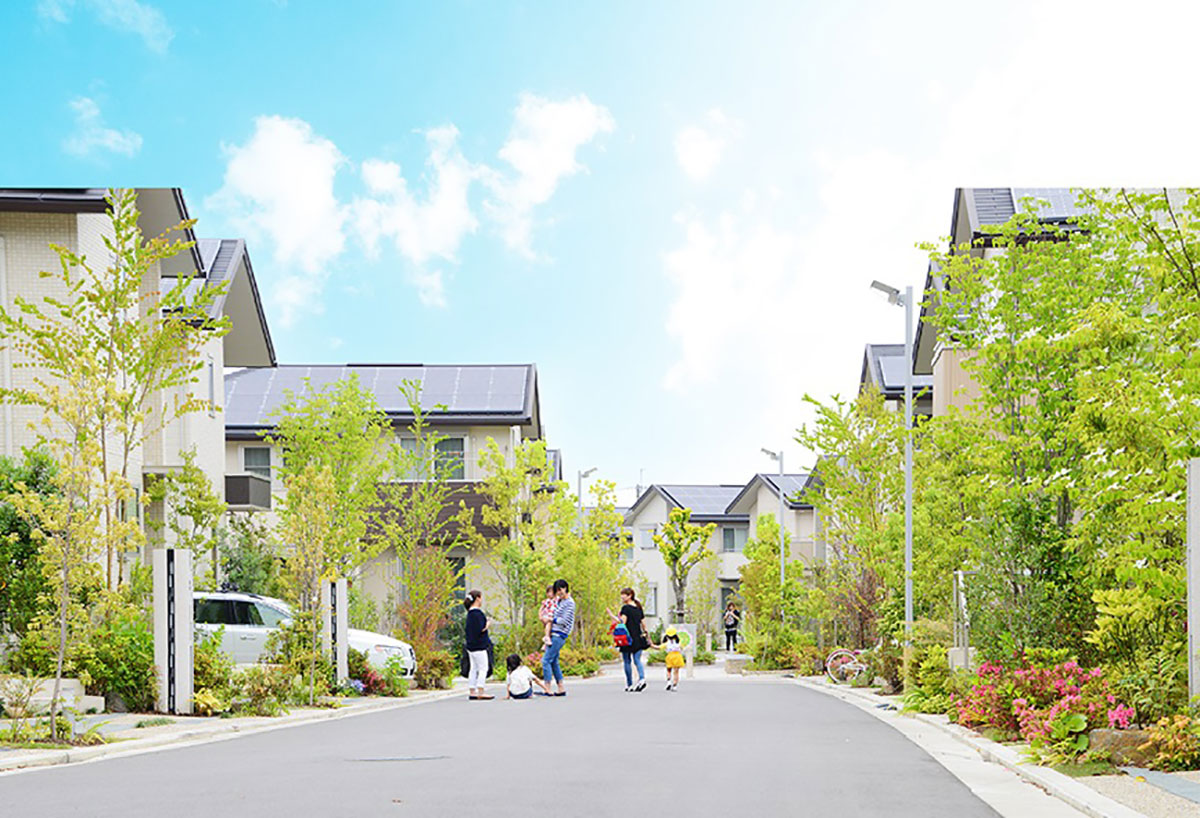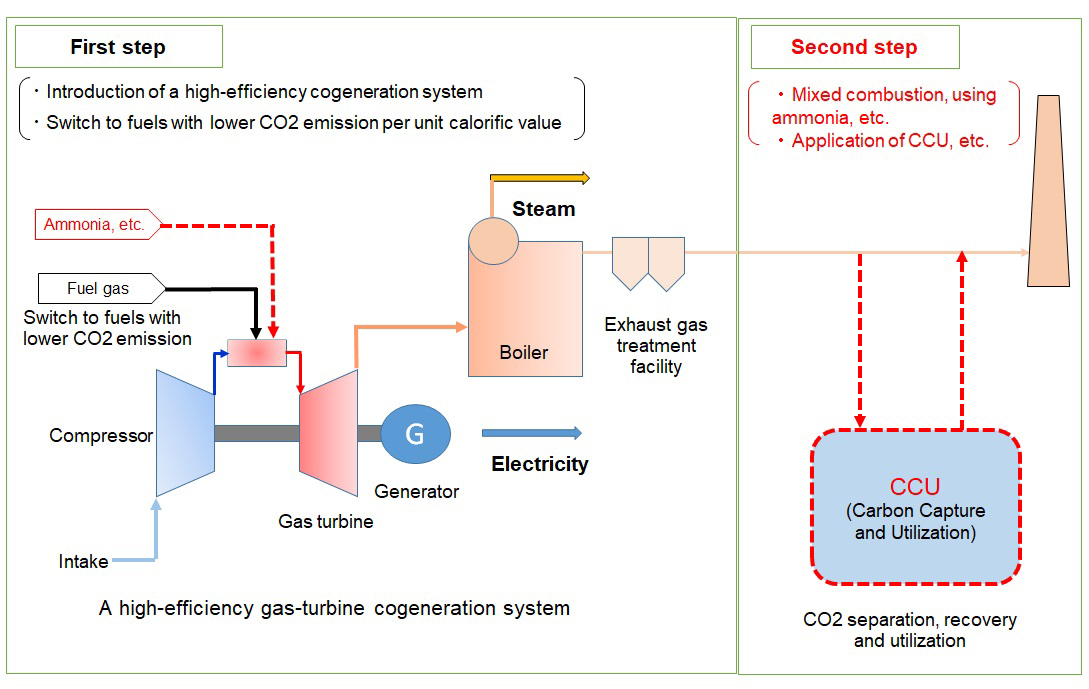Contribution to zero CO₂ emissions by developing bearing steel for long-life wind power generation
SANYO SPECIAL STEEL Co.,Ltd.
Outline
Recently, the demand for zero CO₂ emissions against the power generation business is rapidly increasing all over the world. Wind power generation shown in Fig. 1 has begun to be recognized as one of the effective measures, and is spreading mainly in Europe.
One of the major issues for expanding wind power generation equipment is to make it highly reliable equipment that can continuously and stably generate power. This is synonymous with reducing equipment maintenance opportunities, and in order to achieve this, it is required to suppress troubles during operation. That is, bearings, which are the core components of wind power generation equipment, are required to have high reliability.
Therefore, based on the high-cleanliness technology for steel that we have cultivated so far, we aim to develop bearing steel for wind power generation that can obtain stable long-life property. Furthermore, we will contribute to zero CO₂ emissions by its implementation and spreading.
Description
(1) This challenge in the expansion of wind power generation equipment
There are two major issues for its expansion. One is the reduction of initial equipment cost. Since it is required to generate stable power with high efficiency, the equipment is often installed in mountainous areas with good wind conditions or at sea, which ends up with a large initial cost. As for Japan, the lack of land suitable for wind power generation has forced us to choose the sea, which costs more to install than the ground, and for this reason it has not been as widespread as in other countries. Currently, technological development of offshore power generation for cost reduction is being carried out at a rapid pace in various fields.
Another issue is the reduction of the number of equipment maintenances. In order to improve power generation efficiency or to increase the diameter of the wind turbine to generate higher power, the generator power rotating part (main shaft in the hub, speed increaser and generator) of the core part is installed in a high place with low maintainability. Operation costs would become higher if a trouble unexpectedly occurs in this vital part. Therefore, we are required to have stable and long-life quality for bearing steel used in the power rotating part in the heart of the wind power generator.
(2) Challenge goal
In order to overcome the above-mentioned issues, we have set the following two points as contributions from the material supply side.
1. We will visualize the bearing fatigue (rolling fatigue) mechanism in an environment unique to wind power generation equipment, which has not been clarified at present.
2. Based on the obtained mechanism, we will develop a long-life bearing steel that can quantitatively predict the life and then supply it to the market.
(3) Specific challenge toward the goal
As shown in Fig. 2, the power rotating part, which is generally the key to power generation, is composed of three parts: the spindle part, the speed increaser part, and the generator part. Since the bearings of each part have different rotation speeds, loads, lubrication conditions, and so on, each part has a unique usage environment. In addition, because the bearings are used in ever-changing weather conditions, they are in a rolling fatigue environment where the conditions are constantly unstable. The fatigue mechanism of bearings used in these environments has not been clarified yet due to the complex influencing factors. We aim to figure out the mechanism by combining the most-advanced rolling fatigue test method and simulation technology. Furthermore, we plan to model the cracking behavior (generation ⇒ transmission ⇒ fracture) leading to fracture, to develop a long-life bearing steel that can quantitatively predict the life based on it, and to aim for commercialization.
(4) Effect by the realization of this challenge
We will work on development and commercialization of bearing steel for wind power generation that can obtain stable long-life property by realizing this challenge, and contribute to the expansion by improving the reliability of wind power generation equipment.
Supplementary information
Sanyo Special Steel Co., Ltd. Sanyo Technical Report, Vol.13 (2006) p.73.
"Bearings and Bearing Steels for Wind Turbine."
http://www.sanyo-steel.co.jp/technology/images/pdf/13/13_07.pdf
Other Innovation Challenges
Reduction of CO₂ emissions in various industrial furnace operations by developing high-strength heat-resistant steel tubes for heat exchangers
SANYO SPECIAL STEEL Co.,Ltd.
Similar Innovation Challenges
Achieve 2050 decarbonization target with Net Zero Energy House!
Sekisui House, Ltd.
Achieving net-zero emissions by promoting renewable energy use through both our monozukuri and products.
DAIWA HOUSE INDUSTRY CO., LTD.



